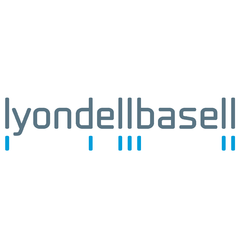-
Posts
494 -
Joined
-
Last visited
Awards
This user doesn't have any awards
Profile Information
-
Gender
Male
-
Occupation
Systems Analyst
System
-
CPU
9700k
-
Motherboard
Asus Z390-I
-
RAM
Trident Z 4600
-
GPU
RTX 2080Ti
-
Case
Louqe Ghost S1
-
Storage
2 x 970 Evo Plus
-
PSU
SFX-800-LTI
-
Display(s)
U32D970 + 38GL950G
-
Keyboard
Rama
-
Operating System
10 Pro
Recent Profile Visitors
1,899 profile views
LyondellBasell's Achievements
-
That would be my recommendation. Since your motherboard has 4-pin fan headers, I think you should look for a hub that supports 3-pin fan connections and has a 4-pin output to connect to the board.
- 4 replies
-
- help
- troubleshoot
-
(and 3 more)
Tagged with:
-
I think to start we need some more information. We need pictures of what pin layout the fans have. From what I can find online, it says 3+3 pin? But that doesn't match with what the pictures show, the pictures show a 6-pin? connector for the fan connection to that hub. How does the fan that comes with the case normally get plugged in? Does the case or the fan hub come with adapters?
- 4 replies
-
- help
- troubleshoot
-
(and 3 more)
Tagged with:
-
Budget (including currency): $1,900 Country: USA Games, programs or workloads that it will be used for: Lightroom + Photoshop//Jedi Survivor + SW Outlaws Other details: Doing some upgrades to my 2015 i7-6700k/Z190/DDR4 build. I already replaced my Titan SLI setup with a 3090 2 years ago, and am looking to refresh the rest of the system to keep pace with modern games at 4K and increasingly larger photo files. The entire build is watercooled and will remain that way, I've already accounted for all waterblock upgrades. Whatever processor I choose will be getting tuned to extract more performance. Right now I'm leaning towards the 13900k, with some DDR5 and a Crucial T700 to round out the system. I've watched LTT and others' comparisons with the 7800X3D. I know it's faster for gaming, draws less power, and prices out a bit cheaper even with a similar board. I *do* value strong performance in Adobe apps though, and I'm having a hard time making the right decision. Should I wait for the next Intel gen? Should I check out with the 13900k today? Is the 7800X3D *that* superior that I should ignore the Adobe performance and go Team Red? Help me out here, LTT.
-

App/program to remember window positions after unplugging monitors
LyondellBasell replied to Tartares's topic in Displays
Was going to say Fences, I believe DisplayFusion also has this feature. -
Nope, I believe you're correct. They're the same panel, the Alienware is HDR600 as compared to the 38GL's HDR400. The Alienware is technically the best panel, unless you prefer the look of the LG.
-
38" UW's a nice format. If you like your Dell but want to add HDR+Gsync, maybe look at the LG 38GL950G-B. Yeah, it's not HDR1000. It's one of the best panels you can buy though.
-
Whatever you choose, don't base any decision you make on "input lag" or "response time". You will not be able to tell with your usage case. We're not talking high-tier, competitive FPS here. There's no camera movement, there's no crosshair, and nothing you do is split-second. The things that will matter to YOU are pixel density, screen size, and display mounting options, since it sounds like you have limited space and may want the change how everything's lined up at some point. You should buy solely based on these things.
-
I think I'm a bit confused on what you're looking for. I understand you want a monitor mount that's freestanding, am I correct that you want the mount to hold two G32QC panels?
-
I think you can make a great cooling setup for less than £700. I don't believe there's any reason to even bother with sub-zero. You have a server-size space, and noise isn't a factor. Get some great radiators, and use some server-grade fans to pump as much air as you can through the system. If the server space is properly ventilated, you'll keep everything close to ambient and you can do it indefinitely with yearly maintenance.
- 1 reply
-
- tec cooler
- water loop
-
(and 1 more)
Tagged with:
-
There just really isn't a market for them. Right now, most of the work being done that requires high resolution can be done perfectly fine at 4K. I can only speak to the limited photography and cinematography experiences I've had, but for us, color reproduction accuracy is far more important than any push beyond 4K. I usually sit about 2-3 feet back from the mastering displays and from that distance, the individual pixels are not readily distinguishable. I *guess* it would be nice to have even larger displays to appreciate the impact of some of our larger-format work before it goes to publish, but 1) We've done just fine without it so far 2) I'd have a really hard time making the case to someone with budget oversight given #1 3) A lot of times, the source material we're working with (with the exception of photographs and digital images) is not shot at 8K, and certainly not seen by the end-user at that resolution. So it's enough to be able to pan around the source material at 4K, do our work, and then export.
-

How many lumens do i need for keylight and fill light?
LyondellBasell replied to Ya_Mi's topic in Photography and Videography
Yes, the more light you can give yourself, the better your end-image will be. As far as color temperature goes, 6500K is going to be a little bit on the cooler side, or more blue. You can adjust the color temperature right there in-camera, but if for some reason you had no way to adjust it, I'd recommend going with a slightly warmer light rather than a colder one, cold light tends to be less flattering for skin tones. -

How many lumens do i need for keylight and fill light?
LyondellBasell replied to Ya_Mi's topic in Photography and Videography
In that case it's probably best to find a bright lamp or several that fits within your budget and either bounce it off the wall, shoot it through a sheet, or make a homemade softbox.




.thumb.gif.768687c970c1ab1567a4fd9659e76d5a.gif)




